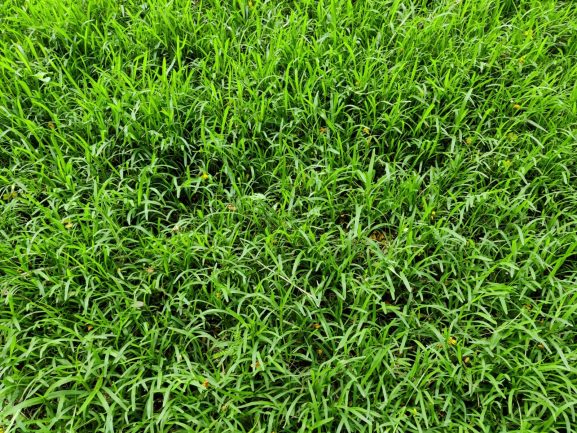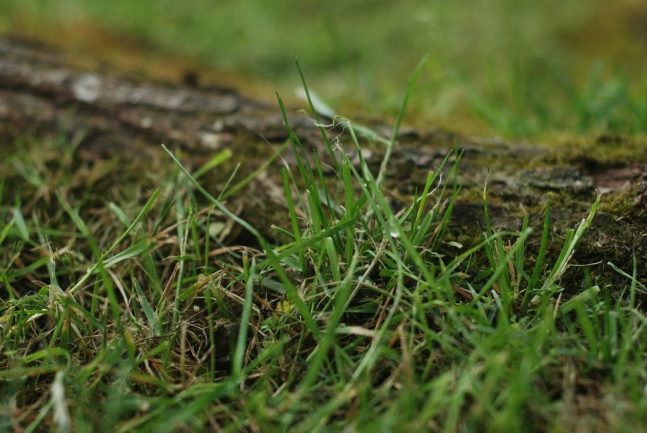Bermuda grass, known for its resilience and ability to thrive in various climates, is a favored choice among homeowners and landscapers alike. Its popularity stems from its adaptability, making it a suitable option for both residential lawns and golf courses. Characterized by its fine texture and vibrant green color, Bermuda grass creates a dense, lush lawn that can withstand heavy foot traffic and harsh environmental conditions. This warm-season grass is particularly well-suited for regions with hot summers, where its ability to remain green and healthy under the sun shines.
Understanding Bermuda Grass Characteristics
Bermuda grass is a warm-season perennial that thrives in hot climates. It grows rapidly during the warmer months, spreading through both seeds and underground rhizomes. This dual growth strategy allows Bermuda grass to cover large areas quickly, making it a top choice for those looking to establish a thick, hardy lawn. The grass is drought-tolerant and can withstand high temperatures, though it requires full sunlight for optimal growth. Due to its aggressive nature, Bermuda grass can outcompete weeds, creating a uniform and aesthetically pleasing lawn.
Why Bermuda Grass is a Popular Choice

The popularity of Bermuda grass is not just due to its appearance but also its durability. It can handle the wear and tear of everyday use, making it ideal for areas with high foot traffic, such as playgrounds, sports fields, and backyards. Moreover, Bermuda grass’s low water requirements and resistance to diseases and pests make it an environmentally friendly option. This grass is also relatively low-maintenance, requiring less frequent mowing than other grass types, which appeals to homeowners seeking a beautiful lawn without the hassle.
When to Plant Bermuda Grass
Timing is crucial when it comes to planting Bermuda grass. To achieve a lush, green lawn, it’s important to plant the grass during the optimal time of year, ensuring the soil conditions are just right for germination and growth.
Optimal Planting Seasons for Bermuda Grass
Bermuda grass is best planted during the warm seasons when the soil and air temperatures are conducive to its growth. The ideal time to plant Bermuda grass is in late spring or early summer, after the last frost has passed. During this period, the soil temperature consistently remains above 65°F (18°C), which is necessary for seed germination and root development. Planting in late spring allows the grass ample time to establish itself before the peak of summer heat, giving it a strong start.
Best Months for Planting Bermuda Grass
For most regions, May through July are considered the best months to plant Bermuda grass. In the southern United States, where the climate is warmer, planting can begin as early as April. In contrast, in regions with cooler climates, June and July might be more appropriate to ensure that the soil has warmed sufficiently. Planting during these months gives Bermuda grass the extended warm season it needs to establish deep roots and develop a thick, green cover.
Considerations for Warm and Cool Climates
While Bermuda grass is typically associated with warm climates, it can also be planted in areas with cooler summers. However, in cooler climates, it’s essential to plant Bermuda grass during the warmest part of the year. In northern regions, this may mean planting in late June or even early July. The goal is to provide the grass with as many warm days as possible before the cooler fall temperatures arrive. In areas with short growing seasons, choosing a variety of Bermuda grass that is more tolerant of cooler temperatures can also help ensure success.
Soil Temperature Requirements for Bermuda Grass
Soil temperature plays a pivotal role in the successful establishment of Bermuda grass. The minimum soil temperature required for Bermuda grass seed to germinate is around 65°F (18°C). However, for optimal germination, the soil should be closer to 70°F to 75°F (21°C to 24°C). Before planting, it’s advisable to use a soil thermometer to check the temperature at a depth of 2 inches (5 cm). If the soil is too cold, the seeds may not germinate, leading to patchy growth. On the other hand, planting in soil that is too hot can also stress the young plants, so aiming for the sweet spot in temperature is key.
Preparing Your Lawn for Bermuda Grass Planting
Before planting Bermuda grass, proper lawn preparation is essential to ensure that the seeds or sod take root and flourish. This involves assessing and preparing the soil, ensuring it has the right nutrients, and using the appropriate tools for the job.
Soil Testing and Preparation
Soil testing is a critical first step in preparing your lawn for Bermuda grass. A soil test will reveal the pH level and nutrient content of your soil, which can be adjusted as needed to create an optimal environment for the grass. Bermuda grass prefers a slightly acidic to neutral pH level, ideally between 6.0 and 7.0. If your soil is too acidic (pH below 6.0), you can raise the pH by adding lime. Conversely, if the soil is too alkaline (pH above 7.0), sulfur can be added to lower the pH. Additionally, the soil should be well-draining and loose, so consider aerating compacted areas to improve soil structure.
Ideal Soil pH for Bermuda Grass
Maintaining the correct soil pH is crucial for Bermuda grass because it affects nutrient availability. At a pH of 6.0 to 7.0, nutrients like nitrogen, phosphorus, and potassium are most readily available to the grass. If the pH is outside this range, the grass may struggle to absorb these nutrients, leading to poor growth. Regular soil testing every few years can help monitor pH levels and make adjustments as needed. Adding organic matter, such as compost, can also help buffer the soil pH and improve its overall health.
Necessary Nutrients and Fertilizers
Bermuda grass thrives on a balanced supply of nutrients, particularly nitrogen, which promotes lush, green growth. Before planting, apply a starter fertilizer that is high in phosphorus to encourage root development. Once the grass is established, a balanced fertilizer with a ratio like 16-4-8 (nitrogen-phosphorus-potassium) should be applied every 6 to 8 weeks during the growing season. Slow-release fertilizers are ideal as they provide a steady supply of nutrients over time, reducing the risk of over-fertilization and potential lawn damage.
Tools Needed for Planting Bermuda Grass
Planting Bermuda grass requires a few essential tools to ensure even distribution and proper soil contact. For seeding, you’ll need a broadcast spreader to evenly disperse the seeds across the lawn. A rake will help you lightly cover the seeds with soil, and a lawn roller can be used to press the seeds into the soil for better contact. For sod, a sharp knife is useful for cutting the sod pieces to fit, and a roller helps ensure good soil-sod contact. Additionally, having a hose or irrigation system ready is crucial for keeping the soil consistently moist after planting.
Planting Bermuda Grass from Seed
Planting Bermuda grass from seed is a cost-effective way to establish a new lawn. While it requires patience and diligent care, following the correct steps can lead to a lush, green lawn in just a few months.
Step-by-Step Guide to Seeding Bermuda Grass
- Prepare the Soil: Begin by clearing the area of any debris, rocks, and weeds. Till the soil to a depth of about 6 inches (15 cm) and incorporate any necessary soil amendments based on your soil test results.
- Spread the Seed: Use a broadcast spreader to evenly distribute the Bermuda grass seed over the prepared soil. The recommended seeding rate is about 1 to 2 pounds of seed per 1,000 square feet.
- Cover the Seed: Lightly rake the soil to cover the seeds with a thin layer of soil, about 1/8 inch deep. This helps protect the seeds from being washed away or eaten by birds.
- Water the Area: Immediately after planting, water the area thoroughly to moisten the soil. Continue to water daily, keeping the soil consistently moist until the seeds germinate, which typically takes 7 to 10 days.
How Much Bermuda Grass Seed to Use
The amount of Bermuda grass seed needed depends on the size of the area you plan to cover. As a general rule, you should use about 1 to 2 pounds of seed per 1,000 square feet. For areas with sparse coverage, you may want to use the higher end of the seeding rate to ensure a thick, uniform lawn. It’s important to measure the area accurately and adjust the seeding rate accordingly to avoid over or under-seeding.
Tips for Even Seed Distribution
Achieving an even distribution of seeds is crucial for a uniform lawn. To do this, divide the seed into two equal parts and apply one part while walking in one direction, and the other part while walking in a perpendicular direction. This crisscross pattern helps ensure that any missed spots are covered. Additionally, consider using a mechanical spreader for more precise application, especially in larger areas.
Watering Protocol After Seeding
After seeding, maintaining consistent moisture in the soil is essential for germination. Water the lawn lightly and frequently, keeping the top 1 to 2 inches of soil consistently moist. Avoid heavy watering, which can cause seeds to wash away. Once the seeds have germinated and the grass begins to grow, you can gradually reduce the frequency of watering, but increase the depth, encouraging deeper root growth.
Sod vs. Seed: Choosing the Right Method
When planting Bermuda grass, you have two primary options: seeding or sodding. Each method has its advantages and disadvantages, depending on your timeline, budget, and desired results.
Pros and Cons of Seeding vs. Sodding
Seeding is more cost-effective and allows you to choose from a variety of Bermuda grass cultivars. It also provides a greater sense of accomplishment as you watch your lawn grow from scratch. However, seeding requires more time and care, especially during the early stages of growth.
Sodding, on the other hand, provides an instant lawn. The grass is already established, so you can enjoy a green, lush yard almost immediately. Sodding is more expensive upfront and requires careful installation to ensure proper rooting. Additionally, sod may not always be available in the specific Bermuda grass variety you prefer.
Cost Considerations for Each Method
Seeding is generally much cheaper than sodding. The cost of Bermuda grass seed ranges from $0.10 to $0.20 per square foot, while sod can cost anywhere from $0.50 to $1.00 per square foot, depending on the variety and location. While sodding is more expensive, it can be worth the investment if you need a lawn quickly or are dealing with erosion issues.
Time Investment: Seed vs. Sod
Seeding requires more time and patience, as it can take several months for the grass to fully establish. During this time, careful watering, fertilization, and protection from weeds are necessary. Sodding, on the other hand, provides immediate results, with the lawn being ready for light use within a few weeks of installation. However, sod requires intensive watering during the first few weeks to ensure the roots establish properly.



